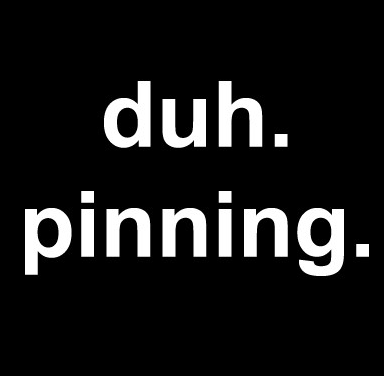It seems like everyone’s discovered Pinterest this week! Alongside the countless posts dissecting its userbase over, sideways, and under have been a series of stories about how it’s “secretly” “monetizing” — a fact unearthed when LLSocial revealed that the startup was using a service called SkimLinks in order to drive affiliate revenue from purchases that originated on Pinterest.
Some reporters (ourselves included) used this opportunity to imply that Pinterest had funded itself through affilate revenue for two years and then ditched the service after it received serious venture capital — provoking an interesting counterpoint article in the WSJ about “Pinterest’s Rite of Web Passage—Huge Traffic, No Revenue.”
The Atlantic’s Alexis Madrigal, admittedly not knowing the company’s financials, takes issue with the WSJ, and postulates that Pinterest could rake in $45 million in annual revenue using affiliate links with its current traffic.
Madrigal’s logic:
1)We know Pinterest is driving truly massive traffic to retail sites, by some accounts more than YouTube, LinkedIn, and Google+ combined. It is, after all, a platform that’s perfect for shopping!
2) We know Pinterest used SkimLinks to add affiliate links.
3) Affiliate links generate revenue.Should this add up to chump change? Let’s do the math just to get an order of magnitude estimate.
Commissions on sales for affiliate links vary widely, but they average around 5 percent. After SkimLinks cut, that’d be 3.75 percent (although SkimLinks says they can sometimes negotiate deals that would keep the percentage closer to the original number).
So, Pinterest has 10 million users. Let’s say that the average across all of them is that they buy items valued at $10 in a month through affiliate links on Pinterest. That’s $100,000,000 of sales for which Pinterest would get credit. That’s $3.75 million in monthly revenue, or $45 million of annual revenue.
This runs counter to what we’ve heard about the actual amount of revenue brought in to Pinterest by SkimLinks, which was modest for an Internet company — between 10 to 20k a year according to one source. Using Madrigal’s formula, this would represent somewhere between $300,000 – $615,000 in transactions coming through the service.
The truth is that the use of SkimLinks on Pinterest was more a question of the analytics it provided than any serious effort at monetization. Word on the street is that EVERYONE in the Valley passed on Pinterest when it was raising initial capital, something that wouldn’t have happened if it had indeed already discovered a viable business model.
The story of Pinterest right now is exactly what it looks like; It really is “hot startup gets venture funding, uses it to scale” not “startup hides the fact that it’s already profitable.” And with its kind of scale (and coffer) it could be losing a million dollars a month and still be a good bet.
Image via
